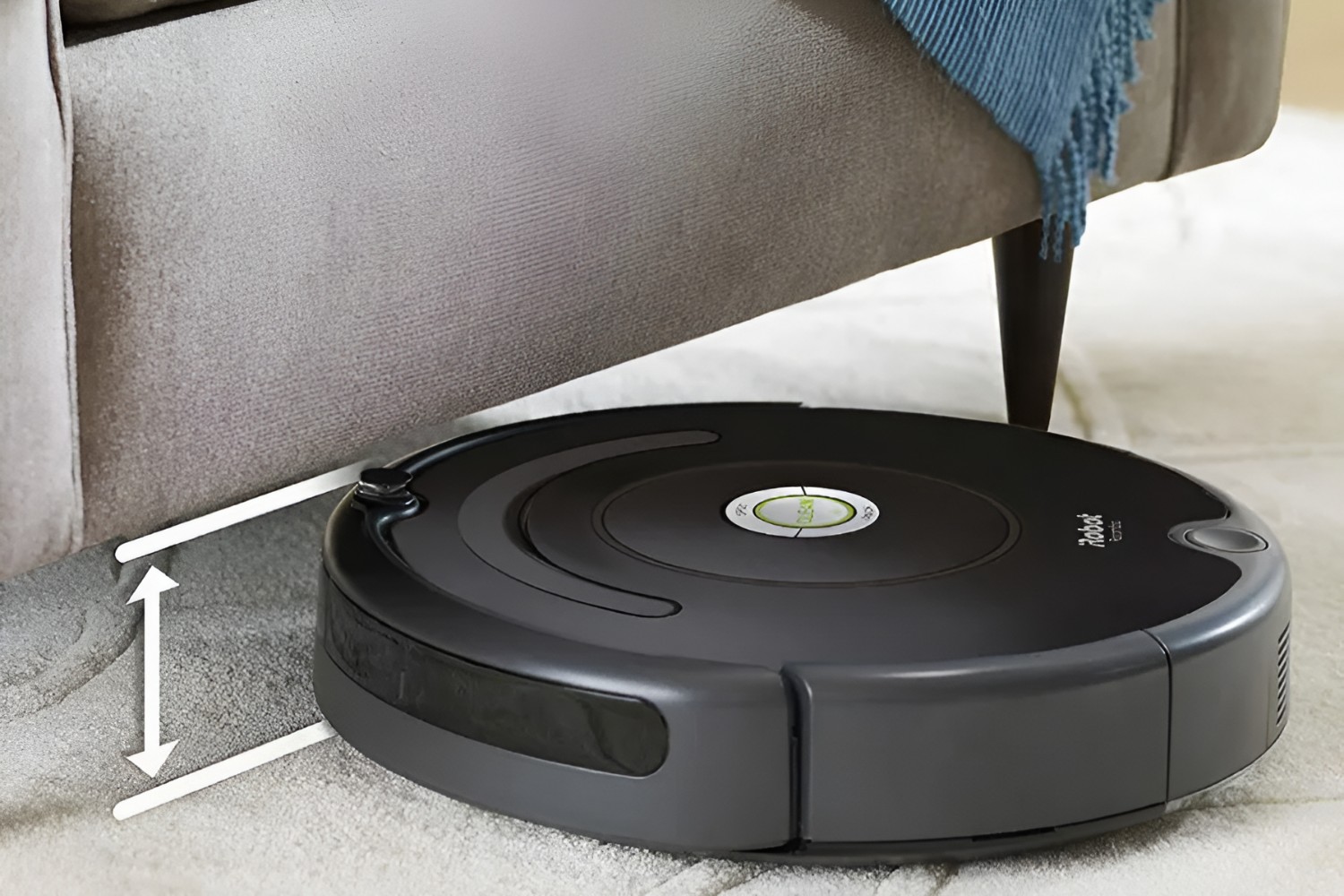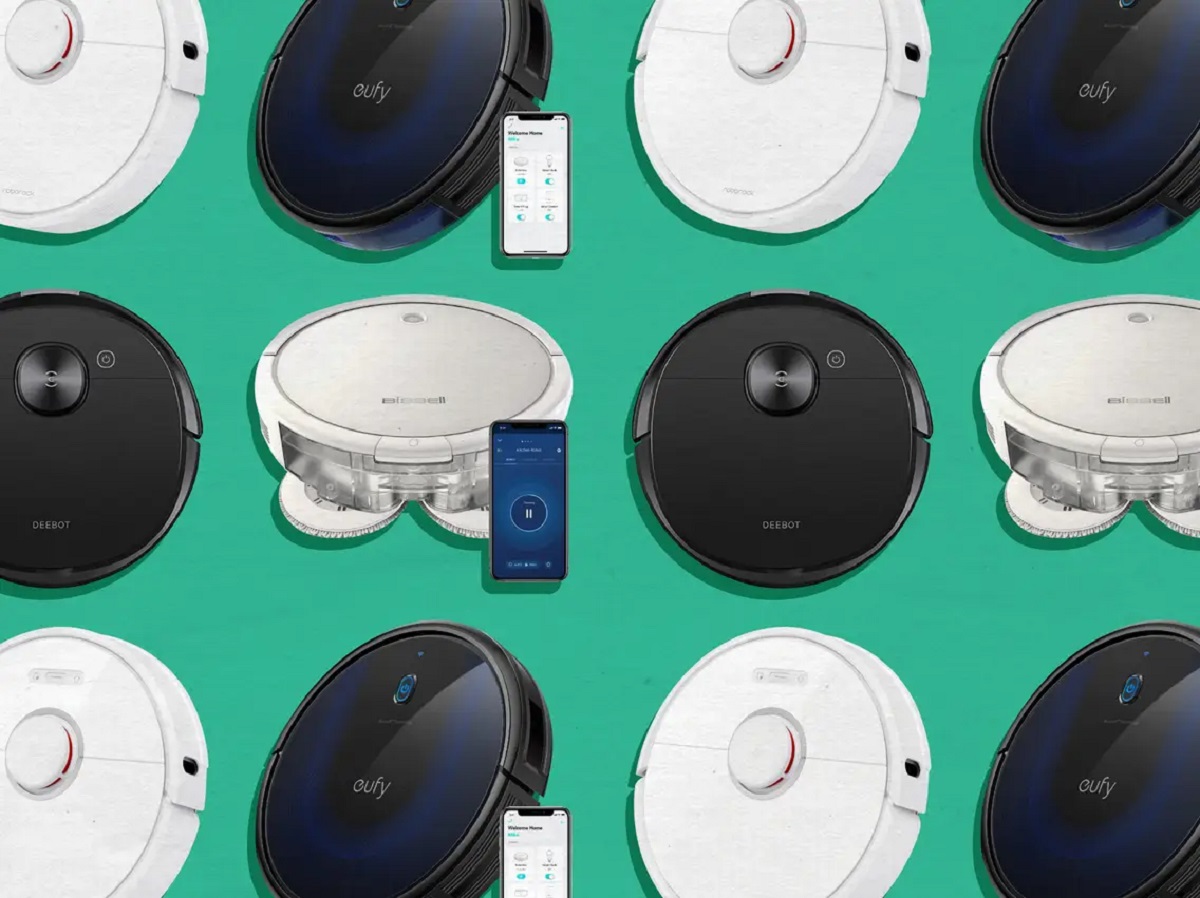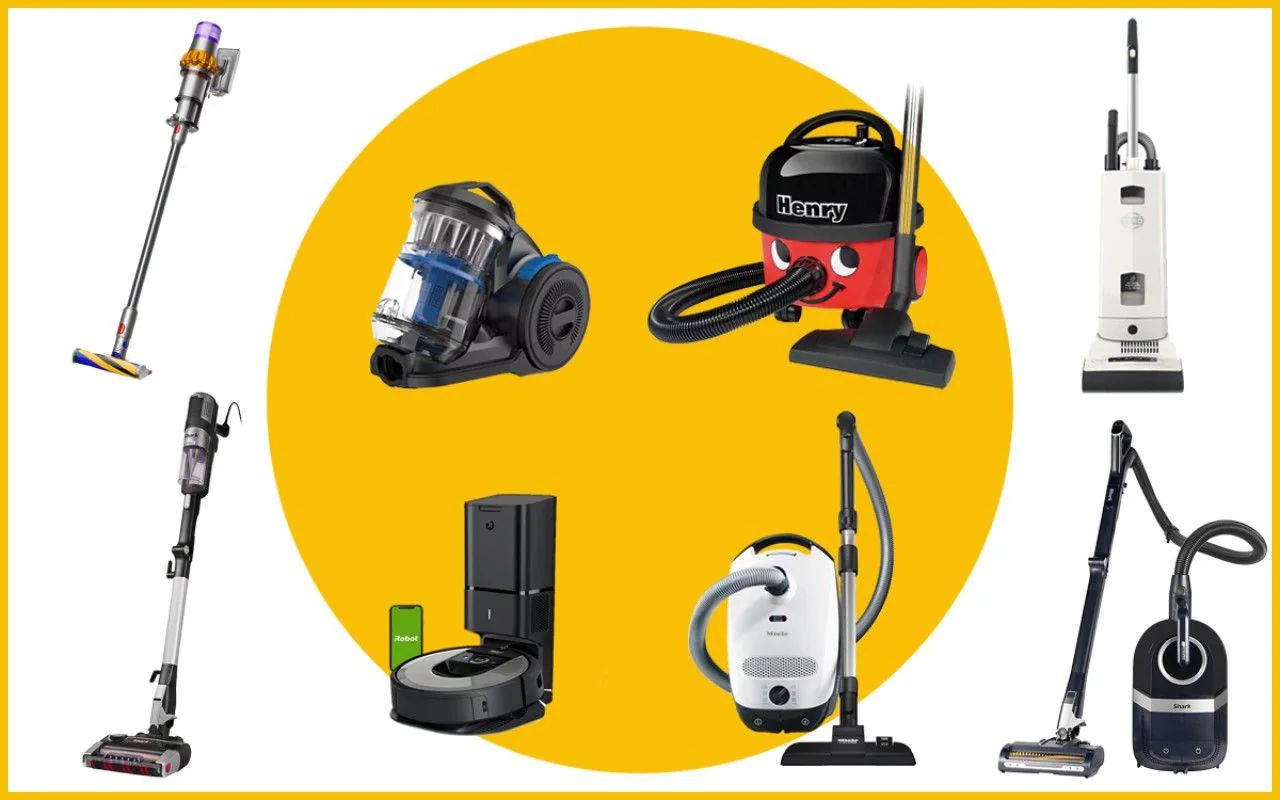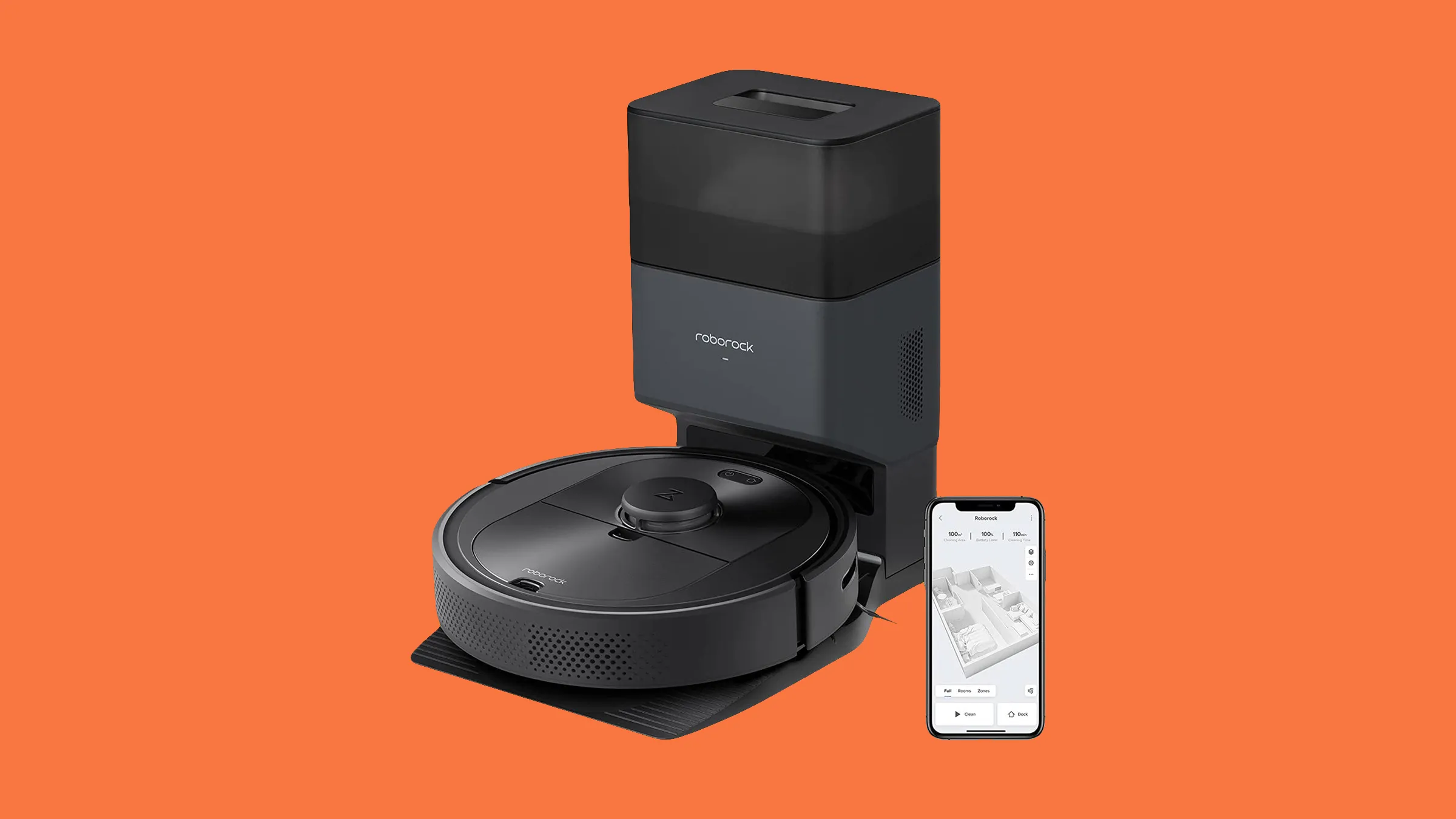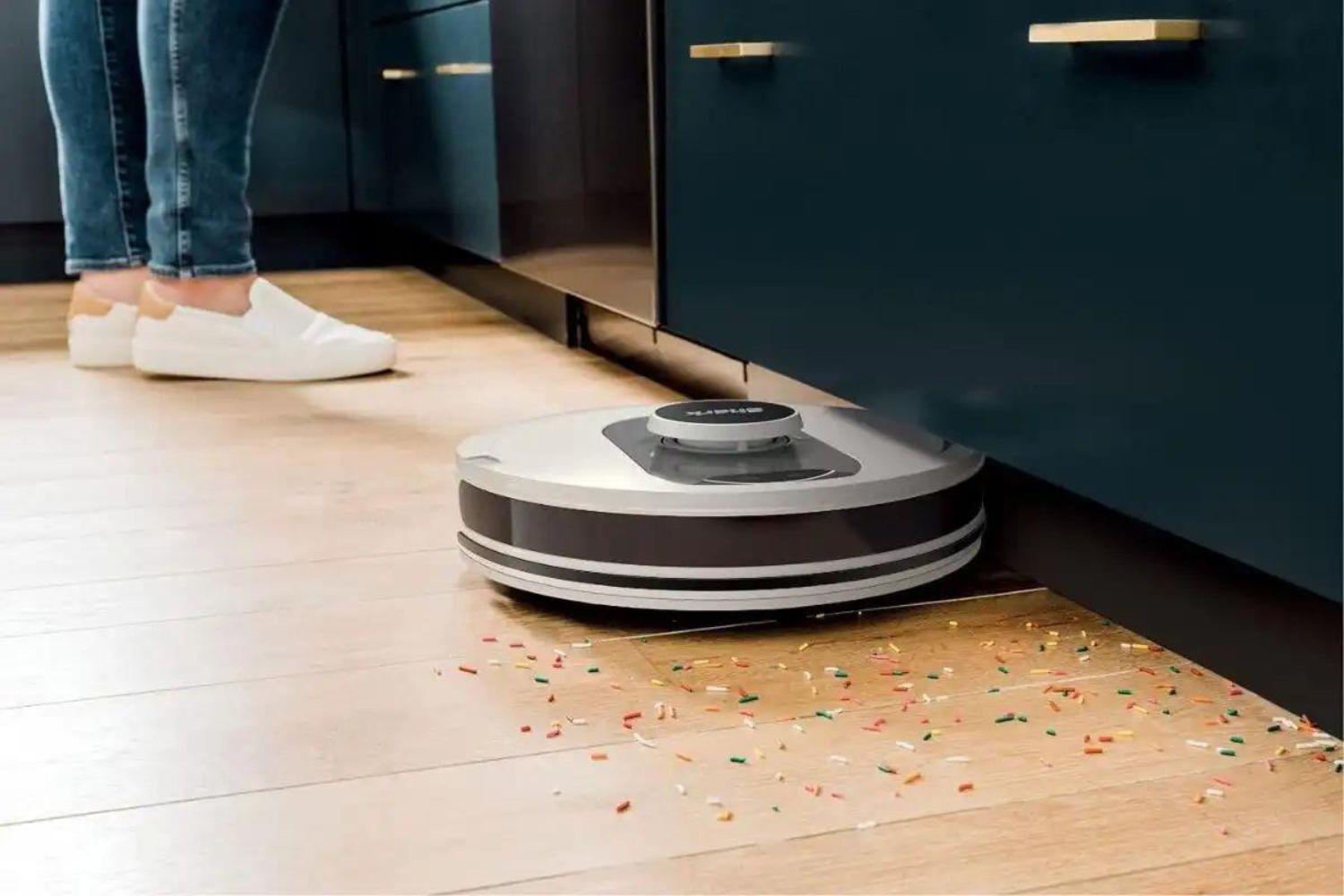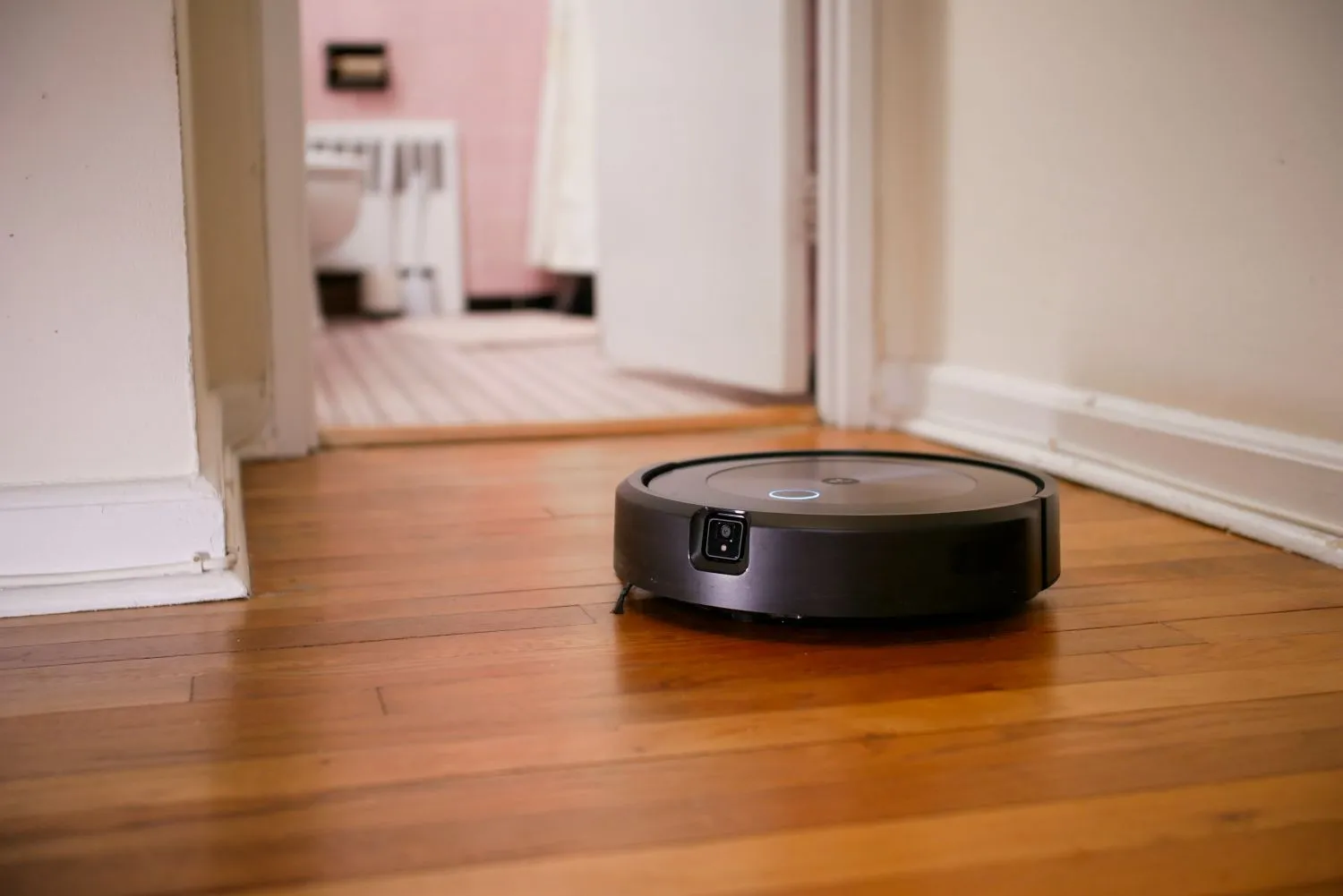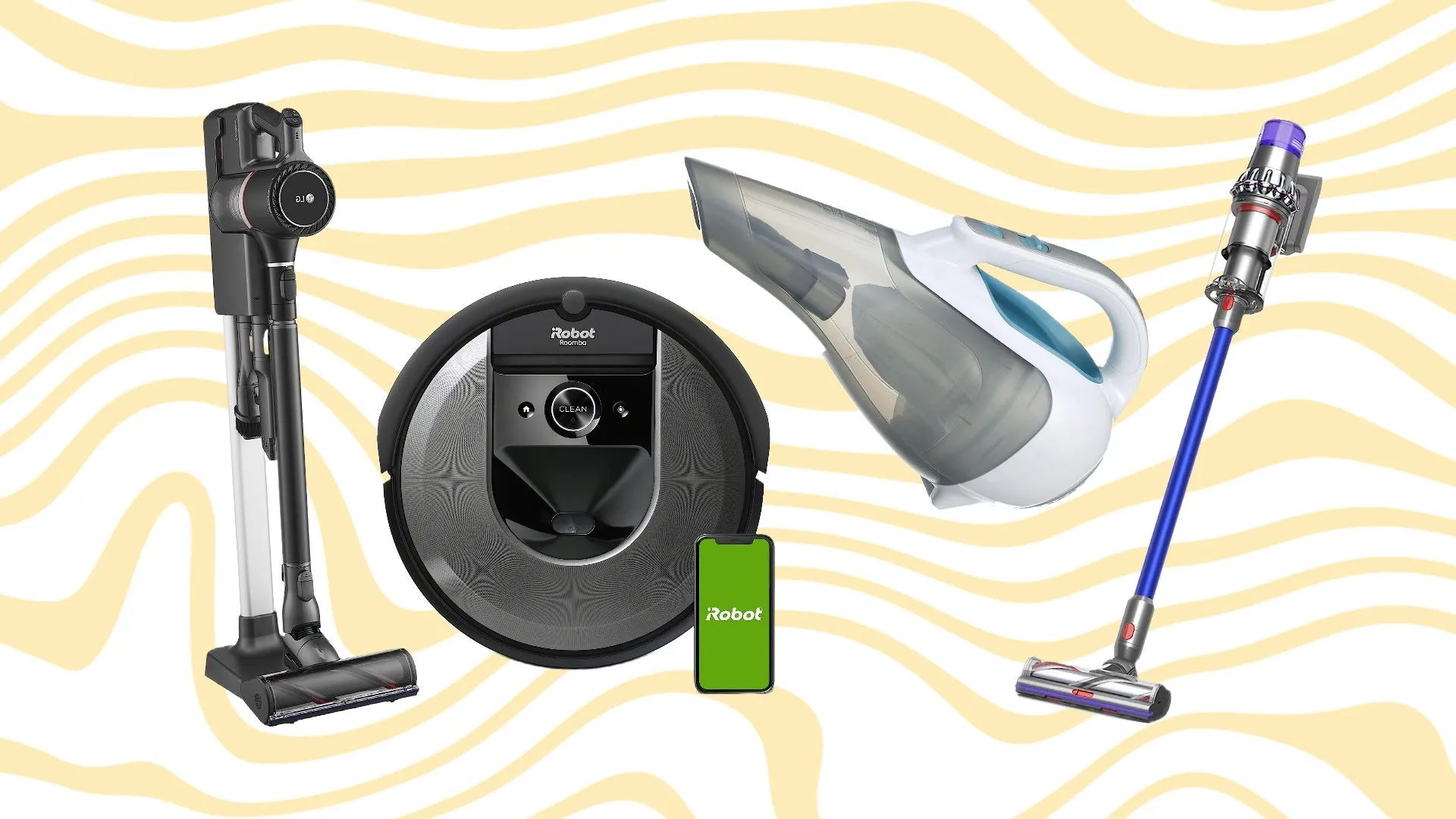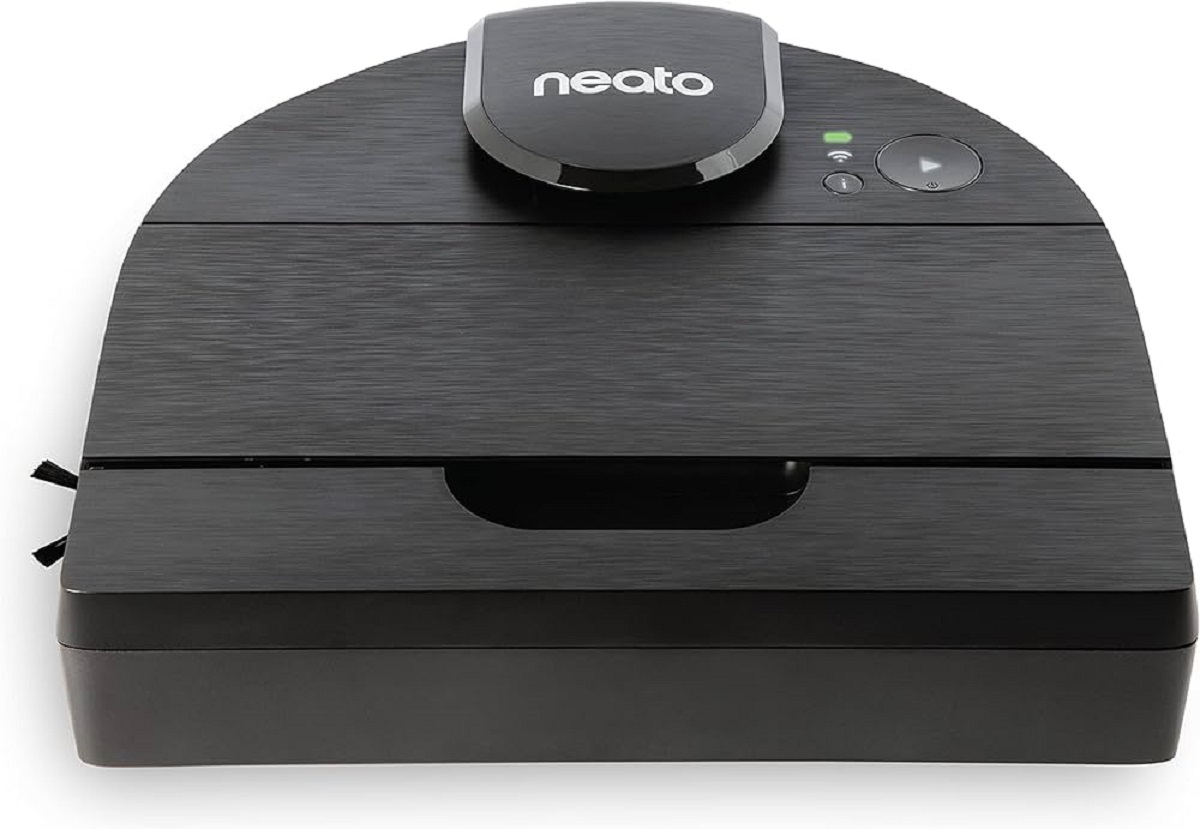Introduction
A robot vacuum can make your life easier by efficiently cleaning your floors with minimal effort on your part. However, one common frustration that many users encounter is when the robot vacuum gets stuck under furniture. This not only hinders its ability to clean effectively but also requires manual intervention to free it from its predicament. Luckily, there are several strategies you can employ to keep your robot vacuum from getting stuck under furniture.
In this article, we will explore some practical solutions to this problem that will help you optimize your cleaning routine and ensure that your robot vacuum can navigate your home with ease. From simple steps such as moving obstacles to more advanced techniques like setting virtual boundaries, we will cover a range of strategies that can prevent your robot vacuum from encountering obstacles that may impede its progress.
By implementing these tips, you can save time, effort, and frustration by allowing your robot vacuum to effectively clean your home without the hassle of constantly rescuing it from under furniture. So let’s dive in and discover how to keep your robot vacuum from getting stuck!
Move Obstacles
One of the simplest yet most effective ways to prevent your robot vacuum from getting stuck under furniture is to remove any potential obstacles from its path. Before you start a cleaning session, take a few minutes to clear the area of items such as toys, cables, and scattered objects that may obstruct the robot’s movement.
By decluttering the space, you create an obstacle-free zone for your robot vacuum to navigate through, reducing the chances of it getting stuck. Additionally, removing obstacles enhances the vacuum’s cleaning efficiency by allowing it to cover more ground and access hard-to-reach areas.
Keep in mind that even small objects can cause issues for your robot vacuum. Items like pet bowls, low-hanging curtains, and small furniture pieces should be taken into consideration when clearing the area.
Consider using organizing tools such as cable clips or cord protectors to keep cables and cords neatly tucked away. This will not only prevent tangles and tripping hazards for humans but also ensure that the robot vacuum can move freely without entangling itself.
Overall, a little pre-cleaning preparation can go a long way in creating a smooth and obstacle-free cleaning experience for your robot vacuum. By removing potential obstructions, you can significantly reduce the chances of it getting stuck under furniture and optimize its cleaning performance.
Raise Furniture
If you consistently find that your robot vacuum is getting stuck under furniture, another solution is to raise the height of the furniture legs. By increasing the clearance between the floor and the furniture, you create more space for the robot vacuum to maneuver and navigate without getting trapped.
If your furniture has adjustable legs, simply raise them to a higher position. This can easily be done by using tools such as wrenches or Allen keys to adjust the leg height. Ideally, aim for at least a few inches of clearance to provide ample space for the robot vacuum to pass underneath.
For furniture without adjustable legs, consider using furniture risers or leg extenders. These accessories can be placed under the existing legs to elevate the furniture and create more clearance. Furniture risers are typically made of sturdy materials like wood or plastic and come in various sizes and styles to suit your specific needs.
When raising furniture, ensure that it remains stable and secure. Test the stability of the furniture after adjusting the leg height to avoid any potential accidents or damage. Additionally, be mindful of the weight limits of the furniture risers or leg extenders you use to ensure they can adequately support the furniture.
Raising your furniture not only helps prevent the robot vacuum from getting stuck underneath but also allows for better airflow and reduces the chance of dust accumulation. This simple adjustment can make a significant difference in the robot vacuum’s ability to clean effectively and efficiently throughout your home.
Use Boundary Strips
If you have specific areas in your home where your robot vacuum frequently gets stuck, using boundary strips can be an effective solution. Boundary strips are adhesive strips that can be placed on the floor to create virtual boundaries that the robot vacuum will not cross.
To use boundary strips, identify the problem areas where your robot vacuum tends to get stuck under furniture. Measure and cut the boundary strips to fit the desired length and shape of the boundary you want to set. Then, simply place the strips on the floor, forming a barrier or perimeter around the furniture or area you want to keep the robot vacuum away from.
The robot vacuum is equipped with sensors that detect the boundary strips and prevent it from crossing them. This helps guide the vacuum away from areas where it may get stuck, allowing it to clean more effectively in other parts of your home.
Boundary strips are particularly useful for open spaces or rooms with furniture arrangements that make it difficult for the robot vacuum to navigate without getting trapped. They provide a clear indication of the areas the robot vacuum should avoid, giving you peace of mind that it won’t get stuck under furniture.
It is important to note that not all robot vacuum models come with boundary strips or support this feature. Check the documentation of your specific model to see if it is compatible with boundary strips or if there are alternative methods for setting virtual boundaries.
By using boundary strips, you can effectively guide your robot vacuum around potential obstacles and prevent it from getting stuck under furniture. This is a convenient and hassle-free way to improve the overall performance and reliability of your robot vacuum.
Clean the Sensors
One common reason why robot vacuums may get stuck under furniture is due to dirty or obstructed sensors. Over time, dust, dirt, and pet hair can accumulate on the sensors, impairing their ability to detect obstacles and navigate effectively. Therefore, it is essential to regularly clean the sensors to ensure optimal performance.
Start by referring to your robot vacuum’s user manual to identify the location of the sensors. Common sensor locations include the bumper, cliff sensors (used to detect stairs or drops), and the bottom of the device.
Using a soft cloth or microfiber cloth, gently wipe the sensors to remove any dirt or debris. Avoid using harsh chemicals or abrasive materials that could damage the sensors. If necessary, you can lightly dampen the cloth with water or use a small amount of isopropyl alcohol to remove stubborn residue.
In addition to cleaning the sensors, it is important to keep the area around them free from obstacles. Make sure there are no loose objects, tangled cords, or pet fur obstructing the sensors’ line of sight.
Regularly cleaning the sensors and maintaining a clear sensor area will ensure that your robot vacuum can accurately detect obstacles and avoid getting stuck under furniture. This simple maintenance routine can significantly improve the robot vacuum’s performance and reduce the need for manual intervention during cleaning sessions.
Set Virtual Walls or No-Go Zones
To prevent your robot vacuum from getting stuck under furniture, you can take advantage of the virtual walls or no-go zone features available in certain models. These features allow you to digitally set boundaries or designate areas where the robot vacuum should not enter.
Virtual walls are devices or sensors that emit an invisible barrier that the robot vacuum recognizes and avoids. They can be placed in doorways or openings to block off certain areas and prevent the vacuum from accessing rooms or sections of your home where it may get stuck.
Alternatively, some robot vacuums offer a no-go zone feature that allows you to define areas through a companion app or remote control. By drawing virtual boundaries on a map, you can specify where the robot vacuum should not venture, such as under low furniture or in cluttered areas.
To utilize these features, consult your robot vacuum’s user manual or app instructions to learn how to set up virtual walls or define no-go zones. Follow the instructions to activate and customize the boundaries according to your specific needs.
By utilizing virtual walls or no-go zones, you can effectively create a digital barrier that prevents your robot vacuum from getting stuck under furniture. This allows the vacuum to navigate freely in open and accessible areas, ensuring efficient and hassle-free cleaning.
Keep in mind that not all robot vacuum models have virtual wall or no-go zone capabilities, so verify if your specific model offers these features or similar alternatives.
By setting virtual walls or no-go zones, you can easily restrict your robot vacuum’s access to areas where it may encounter obstacles and get stuck under furniture. This feature enhances your cleaning experience by empowering you to customize the robot’s path and minimize potential issues.
Schedule Regular Cleaning
One effective way to prevent your robot vacuum from getting stuck under furniture is to establish a regular cleaning schedule. By having your robot vacuum clean on a consistent basis, you can maintain cleaner floors and reduce the chances of it encountering obstacles that may impede its movement.
Most robot vacuums come with scheduling features that allow you to set specific cleaning times and days. Take advantage of this functionality by scheduling regular cleaning sessions that align with your lifestyle and home’s cleaning needs.
When setting the schedule, consider factors such as the level of foot traffic in your home, pet shedding, and any specific cleaning requirements you may have. For instance, if you have pets, you might want to schedule more frequent cleaning sessions to keep up with pet hair accumulation.
Ensure that the cleaning schedule allows enough time for the robot vacuum to complete a thorough cleaning cycle without feeling rushed. This will help the vacuum navigate your home more efficiently and reduce the likelihood of it getting stuck under furniture.
By scheduling regular cleaning sessions, you also provide an opportunity for the robot vacuum to clean while you’re away or occupied with other tasks, saving you time and effort in manually cleaning the floors.
It’s important to note that scheduling regular cleaning does not mean you can set it and forget it. Periodically check on the robot vacuum to ensure it’s functioning properly and encountering minimal issues. If needed, make adjustments to the schedule or address any maintenance requirements to keep the robot vacuum performing optimally.
By establishing a consistent cleaning schedule for your robot vacuum, you can maintain clean floors and prevent it from getting stuck under furniture. This simple routine will ensure that your home stays tidy while minimizing the need for manual intervention during cleaning sessions.
Optimize Room Layout
To help your robot vacuum navigate your home more effectively and avoid getting stuck under furniture, consider optimizing the layout of your rooms. By making strategic adjustments to the layout, you can create a more accessible and obstacle-free environment for the robot vacuum to operate in.
Start by rearranging furniture to create wider paths and open spaces. This will allow the robot vacuum to move freely without the risk of getting stuck or blocked. Avoid placing furniture in a way that creates narrow passages or tight corners that the vacuum may struggle to navigate.
If you have furniture with long skirts or low-hanging drapes, consider shortening or removing them altogether. These items can become entangled with the vacuum’s brushes or obstruct its movement underneath furniture.
Be mindful of the height and design of your furniture. Low-profile furniture with minimal clearance from the ground is more likely to cause issues for the robot vacuum. Opt for furniture with higher legs or adjustable feet to provide more space for the vacuum to maneuver.
Take note of any loose rugs or floor coverings that may shift or bunch up during cleaning, potentially causing the vacuum to get stuck. Secure these items with anti-slip pads or double-sided tape to keep them in place.
In addition to optimizing the furniture layout, ensure that the room is well-lit. Adequate lighting helps the robot vacuum’s sensors detect obstacles and navigate more effectively, reducing the chances of it getting stuck.
Lastly, consider using docking stations or charging stations that are easily accessible and placed in open areas. This allows the robot vacuum to efficiently return to the charging station without encountering obstacles or having difficulty finding its way back.
By optimizing the layout of your rooms, you can create a more robot vacuum-friendly environment. This will help maximize the vacuum’s cleaning performance and minimize the likelihood of it getting stuck under furniture. With a well-designed and organized space, you can effortlessly maintain clean floors throughout your home.
Reset and Reboot the Robot Vacuum
If your robot vacuum is consistently getting stuck under furniture, it may be beneficial to reset and reboot the device. Performing a reset can help resolve any software or memory issues that could be affecting its performance.
To reset your robot vacuum, refer to the manufacturer’s instructions or user manual for the specific steps. Generally, it involves locating the reset button or using a combination of buttons on the vacuum itself or its accompanying remote control.
Once you’ve successfully reset the robot vacuum, it is recommended to reboot it by turning it off and then back on. This simple action can help clear any temporary glitches or errors, restoring the vacuum to its default settings.
Rebooting the robot vacuum can also involve updating its firmware to the latest version if available. Check the manufacturer’s website or the companion app for any firmware updates that may address known issues or provide improvements to the vacuum’s functionality.
After resetting and rebooting, it’s a good practice to observe the robot vacuum during its cleaning cycles to see if the issues of getting stuck under furniture persist. If the problem persists despite the reset and reboot, it may be necessary to contact the manufacturer’s customer support for further assistance.
Resetting and rebooting the robot vacuum can be an effective troubleshooting step to address any software or memory-related issues that may cause it to get stuck under furniture. By giving the vacuum a fresh start, you increase the chances of it functioning optimally and navigating your home without encountering obstacles.
Conclusion
Keeping a robot vacuum from getting stuck under furniture is crucial for maintaining its efficiency and ensuring hassle-free cleaning sessions. By implementing a combination of practical strategies, you can optimize your robot vacuum’s performance and minimize the need for manual intervention.
Start by moving obstacles and decluttering the space before each cleaning session. Clearing the area of potential obstructions allows the robot vacuum to navigate freely and reduces the chances of it getting stuck. Additionally, consider raising furniture or using furniture risers to create more clearance for the vacuum to pass underneath.
Take advantage of features such as boundary strips, virtual walls, and no-go zones, if available in your robot vacuum, to set digital boundaries and prevent the vacuum from accessing areas where it may get trapped. Regularly cleaning the sensors is also essential to maintain accurate obstacle detection and optimal performance.
Setting a regular cleaning schedule ensures that your robot vacuum consistently cleans your floors, minimizing the chances of it encountering obstacles or becoming stuck. Pay attention to optimizing the layout of your rooms by rearranging furniture, removing low-hanging objects, and securing loose rugs.
If you encounter persistent issues, consider resetting and rebooting the vacuum to address any software or memory-related issues that may be affecting its performance.
By implementing these strategies and maintaining a proactive approach, you can enjoy the benefits of a robot vacuum without the frustration of it getting stuck under furniture. Keep in mind that each robot vacuum model may have its own unique features and recommendations, so refer to your specific user manual for detailed instructions on optimizing your cleaning experience.







